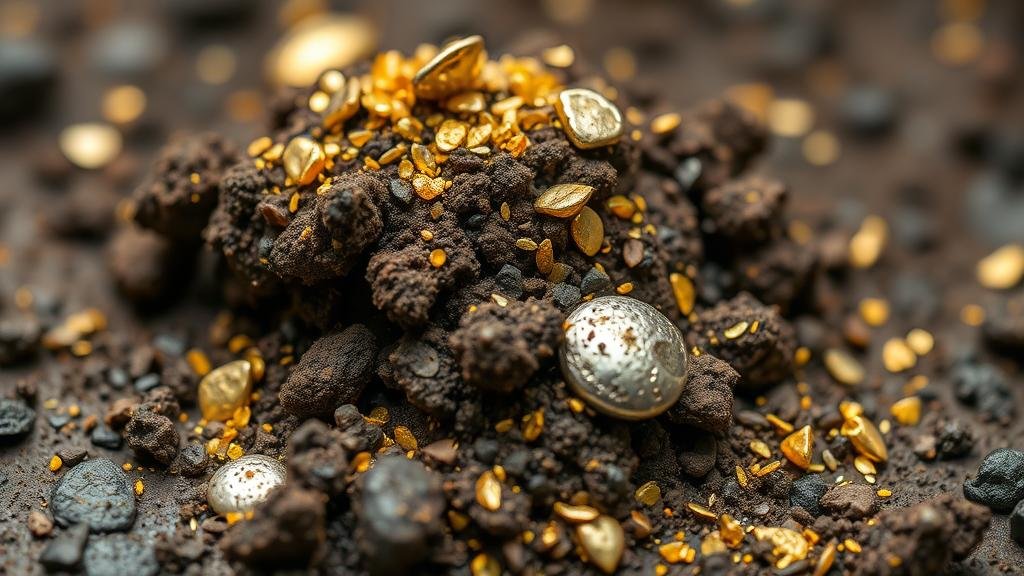Mastering Gold and Silver Detection in Mineralized Soils
Mastering Gold and Silver Detection in Mineralized Soils
The detection of precious metals such as gold and silver in mineralized soils is a specialized skill that requires an understanding of geology, metallurgy, and the use of detection technology. The prosperity of mining industries worldwide hinges on the competency of detecting these valuable resources. This article aims to provide an in-depth analysis of methodologies and technologies for effective gold and silver detection, focusing on mineralized soils where these precious metals are often found.
The Importance of Understanding Mineralized Soils
Mineralized soils are enriched with various minerals and are often fertile ground for precious metal deposits. Understanding the geology of mineralized soils assists in identifying potential sites for gold and silver detection. These soils often contain sulfides, oxides, and other minerals that can influence the behavior of detection equipment.
Diverse geological processes contribute to the formation of mineralized soils, including:
- Hydrothermal processes that lead to the deposition of minerals from hot, mineral-rich waters.
- Weathering, which breaks down rocks and redistributes minerals.
- Volcanism, which can deposit valuable metals in specific geological formations.
Detection Technologies: An Overview
When it comes to detecting precious metals in mineralized soils, various technologies can be employed. The most commonly used methods include:
- Gold and Silver Detectors: These handheld devices utilize electromagnetic fields to identify metallic objects beneath the surface. are often calibrated to recognize the specific properties of gold and silver.
- Ground Penetrating Radar (GPR): GPR uses radar pulses to image the subsurface. This technology can identify the depth and size of deposits, making it an effective tool for mineral exploration.
- Magnetometry: This technique measures variations in the Earth’s magnetic field caused by ferromagnetic minerals, which can indicate the presence of gold and silver deposits.
Techniques for Site Selection
Choosing the right site for gold and silver detection is critical. A thorough understanding of local geology is essential to increasing detection success rates. Here are some proven techniques for site selection:
- Field Research: Prospective areas should be researched, including studying existing geological maps, miner reports, and conducting field assessments.
- Soil Sampling: Collecting and analyzing soil samples can provide insights into the mineral composition of a site, revealing potential areas of interest.
- Historical Data Review: Analyzing historical mining records can highlight areas where significant gold and silver deposits have previously been found, indicating that similar geological features may still contain unexploited resources.
Challenges in Detection
Detecting gold and silver in mineralized soils poses several challenges. These challenges can be attributed to:
- Mineral Interference: The presence of other minerals, such as iron or copper, can produce false signals in detection devices.
- Soil Composition Variability: Variations in soil composition can affect the depth detection range of tools.
- Environmental Factors: Factors like moisture content, soil density, and temperature can influence the detection performance of the equipment.
Case Studies: Successful Detection Strategies
Numerous successful case studies exist that demonstrate effective detection strategies for gold and silver in mineralized soils. One such example comes from the Perez Gold Mine in Nevada, where geological mapping was combined with state-of-the-art GPR technology. process resulted in a successful identification of previously undetected veins of gold, leading to a significant increase in the mines yield.
Another case study involves a team of prospectors in Australia employing multi-frequency metal detectors and methodically scanning areas that historical records indicated were previously mined. Their efforts led to the discovery of substantial silver deposits, underscoring the efficacy of combining traditional and modern detection methods.
Actionable Takeaways
For those looking to master gold and silver detection in mineralized soils, the following actionable takeaways can assist in refining techniques and increasing the chances of success:
- Invest in advanced detection technologies appropriate for the specific mineralized environment.
- Conduct comprehensive geological surveys and soil sampling prior to any detection effort.
- Stay informed about advances in detection techniques, as technology and practices are continually evolving.
- Be prepared to adapt detection strategies based on the challenges presented by varying environmental and geological conditions.
Mastering gold and silver detection in mineralized soils involves a blend of science, technology, and practical experience. By applying advanced techniques and learning from case studies, prospectors can significantly enhance their ability to locate valuable deposits and maximize mining returns.



